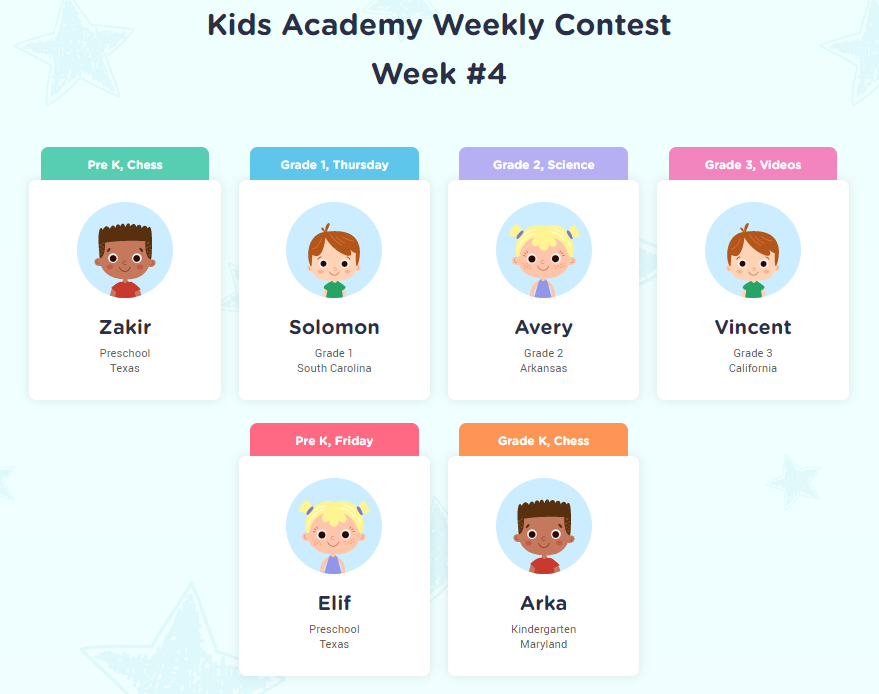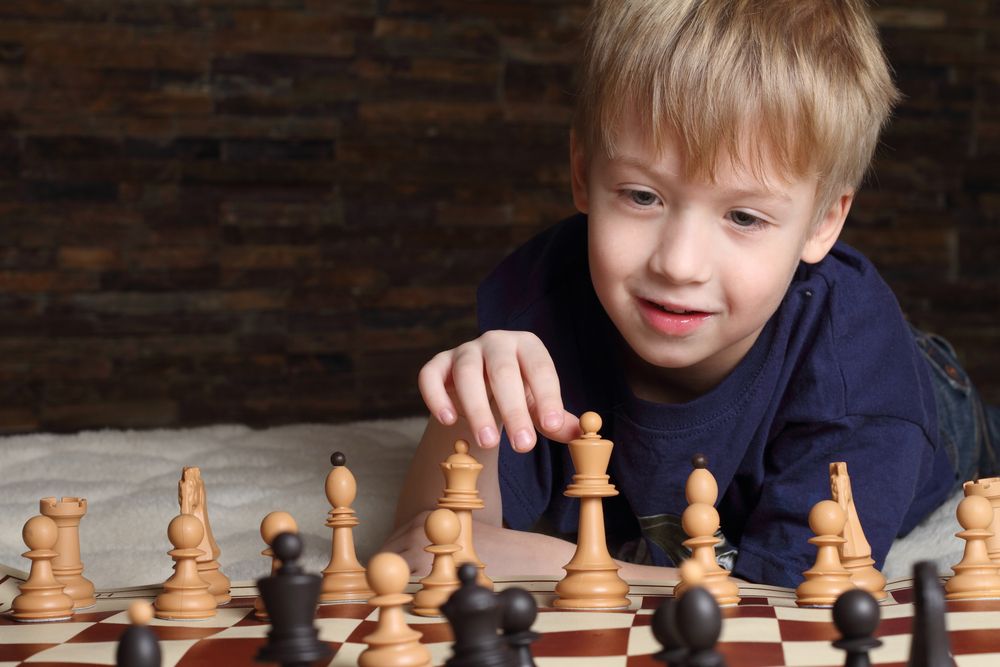Normal Chess Worksheets for 6-Year-Olds
47 filtered results
-
From - To
Introducing our captivating Normal Chess for 6-Year-Olds worksheets! Specifically designed with young minds in mind, these engaging worksheets are the perfect way to introduce the timeless game of chess to your little one. Our carefully curated activities will guide 6-year-olds through the basic rules, moves, and strategies of normal chess, ensuring a fun and educational experience. With colorful, age-appropriate designs, each worksheet is crafted to capture the imagination and foster a love for this classic game. Start your child's chess journey today and watch as they develop critical thinking, planning, and decision-making skills through the joy of play!
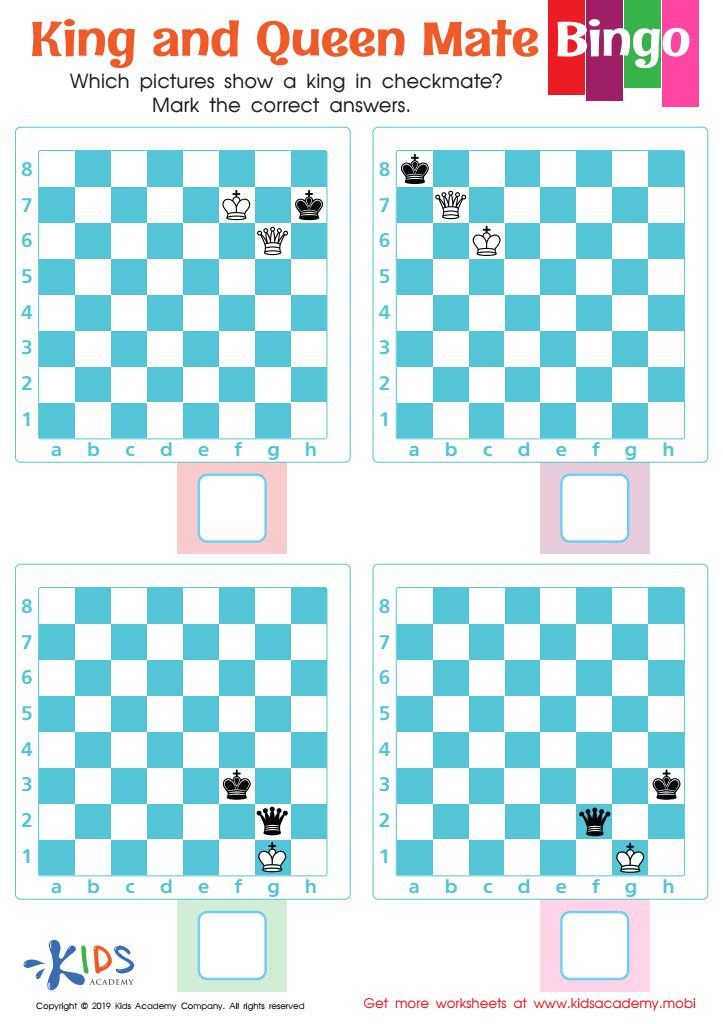

King and Queen Mate: Bingo Worksheet
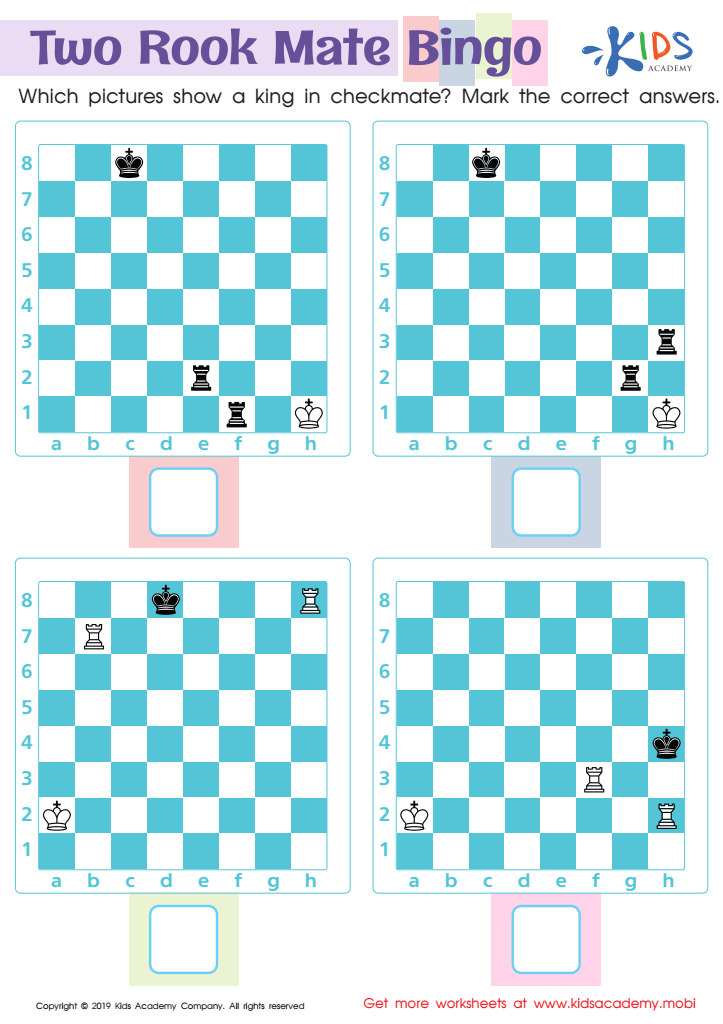

Two Rook Bingo Worksheet
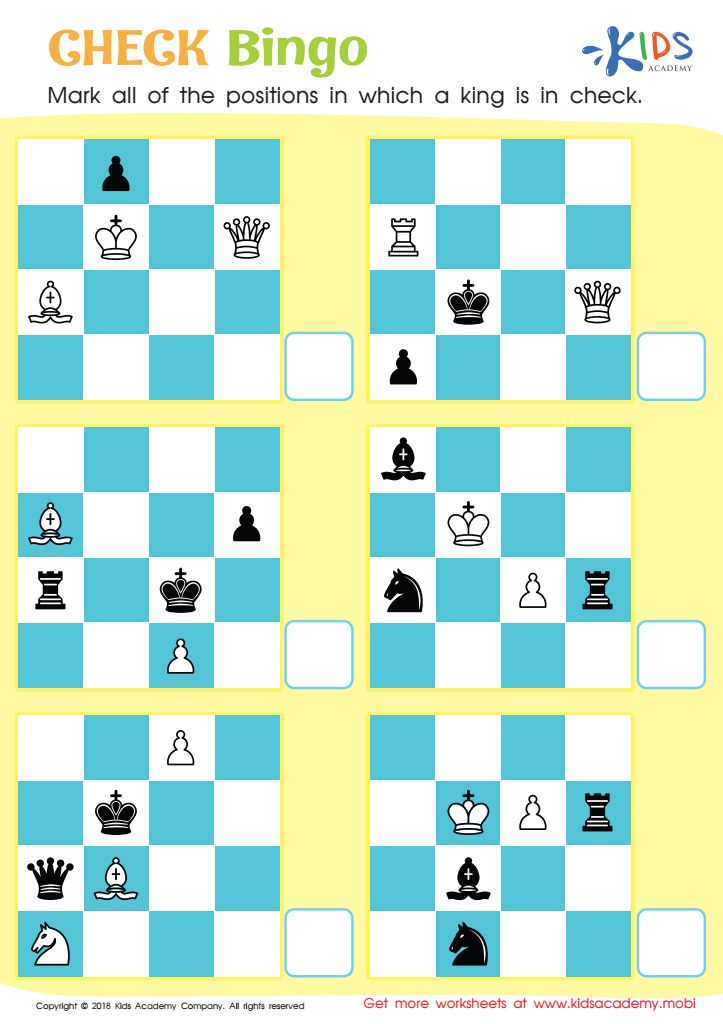

Check Bingo Worksheet
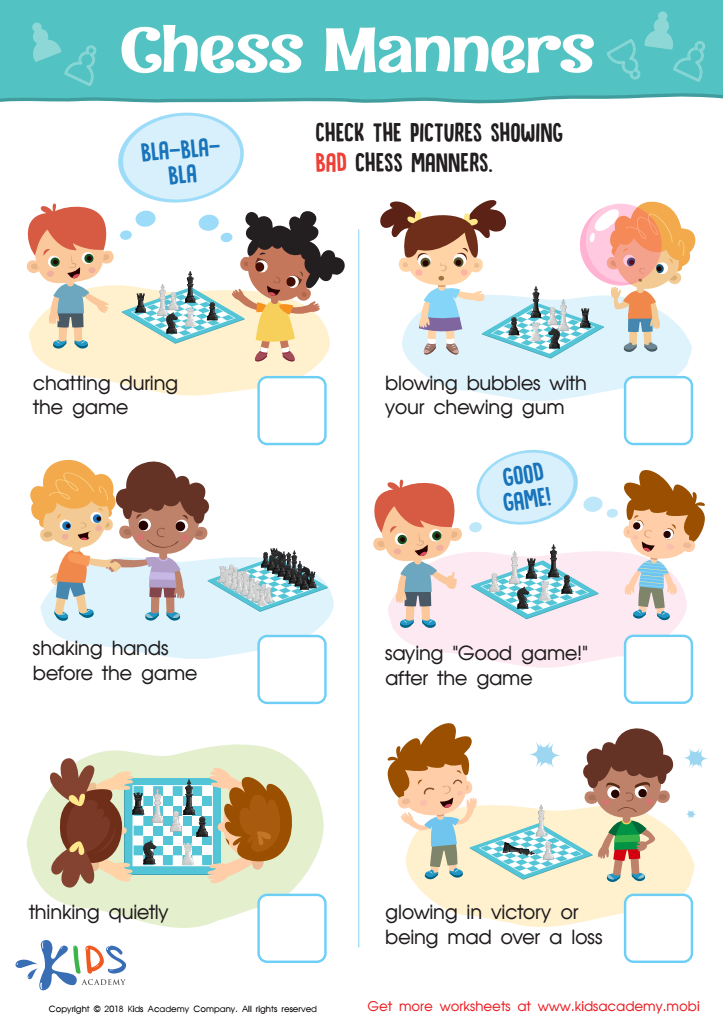

Chess Manners Worksheet
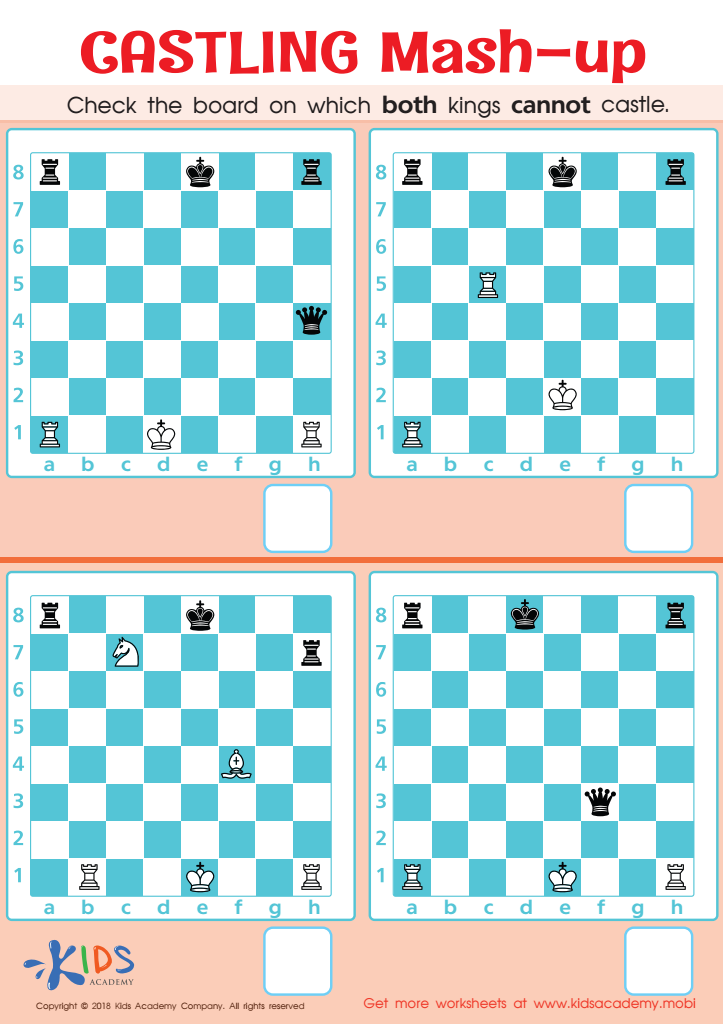

Castling Mash–up Worksheet
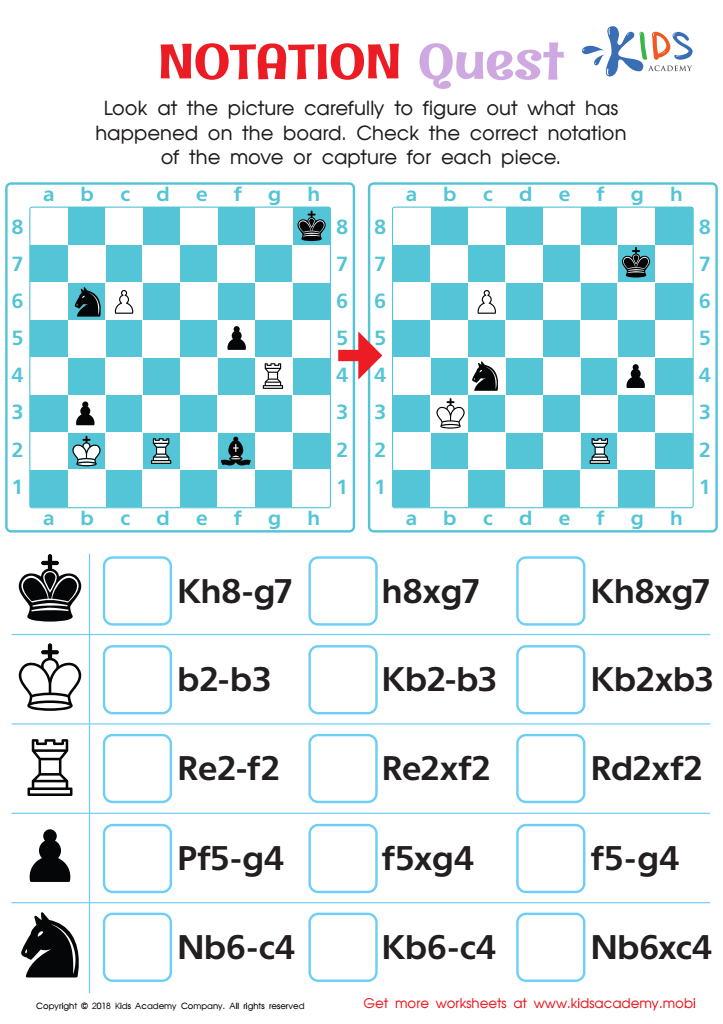

Notation Quest Worksheet
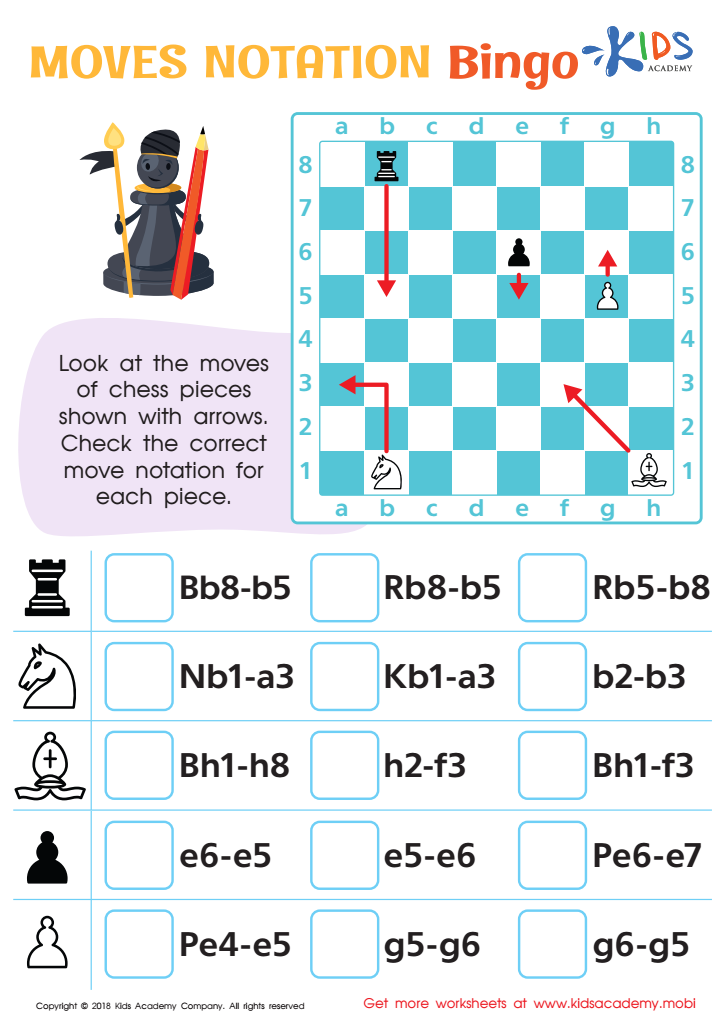

Moves Notation Bingo Worksheet
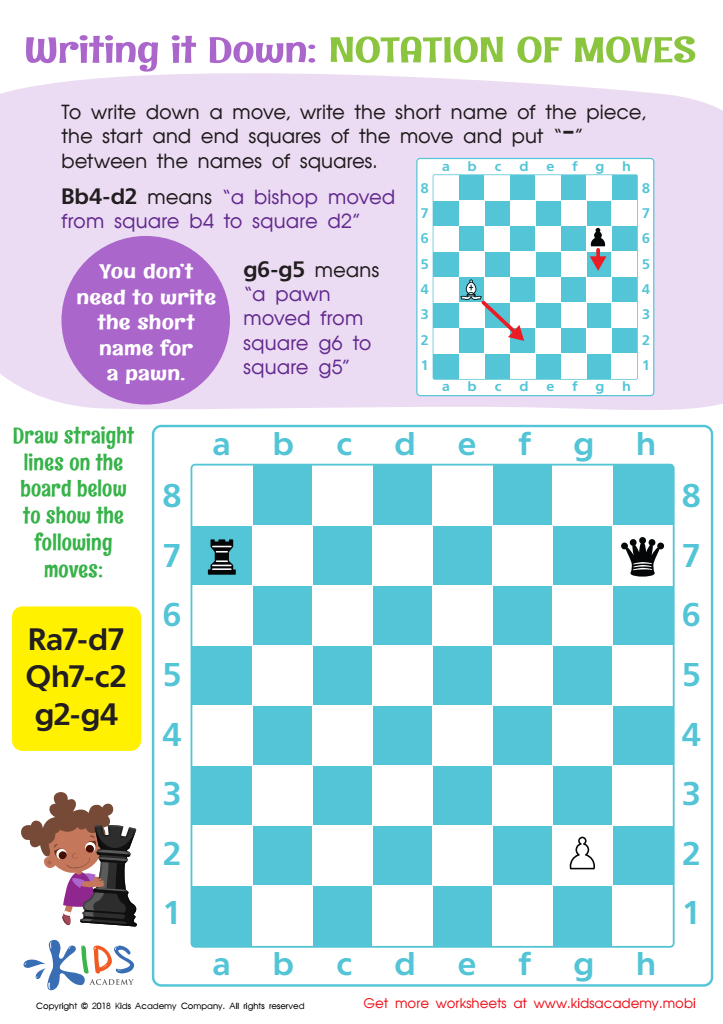

Notation of Moves Writing it Down Worksheet
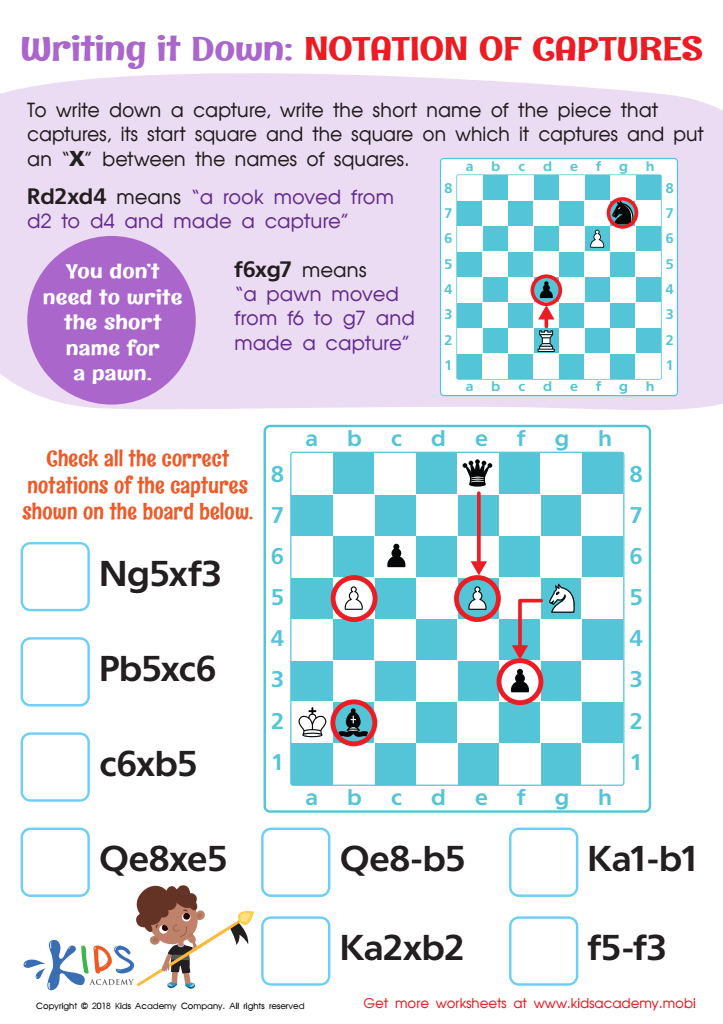

Notation of Captures Writing it Down Worksheet


Chess Pieces Quest Worksheet
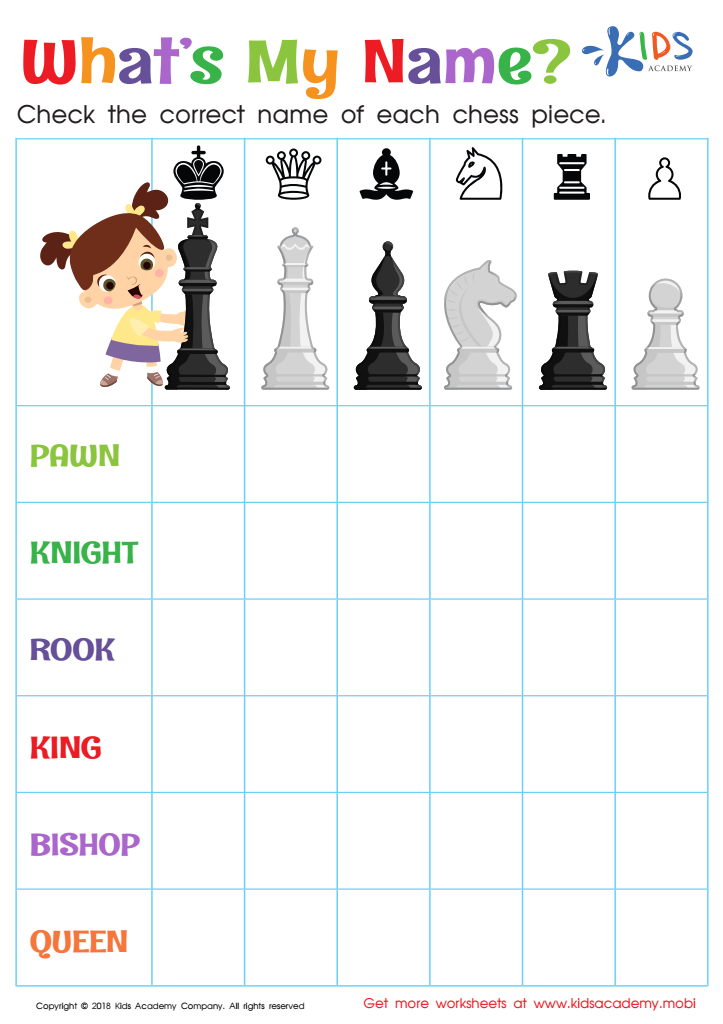

What's My Name? Worksheet
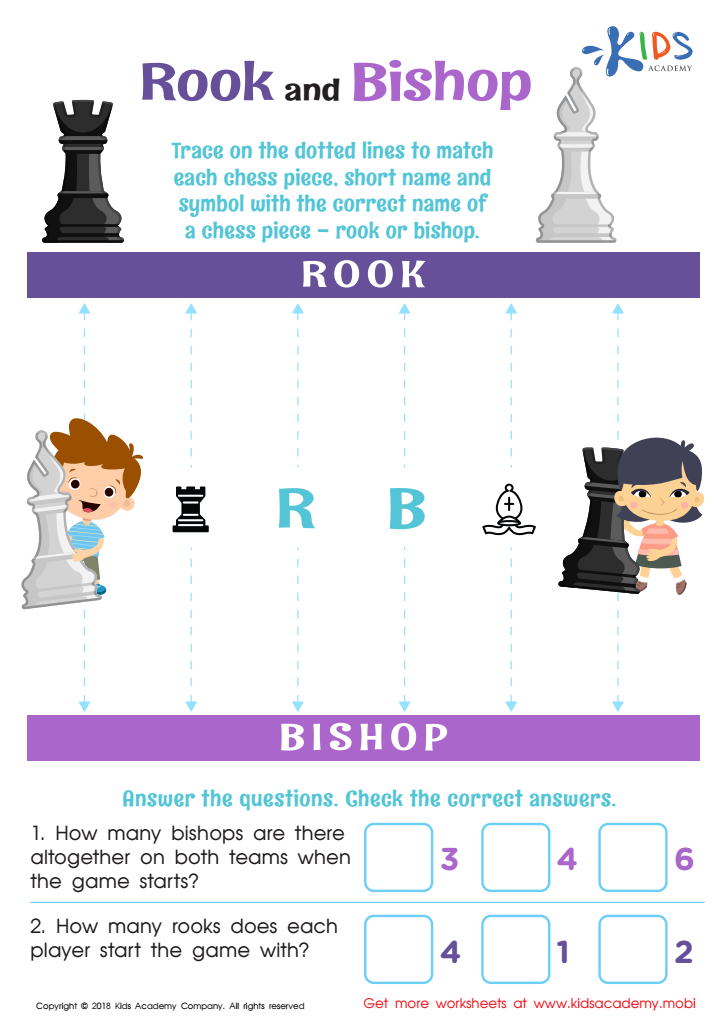

Rook and Bishop Worksheet


Square Names Quiz Worksheet
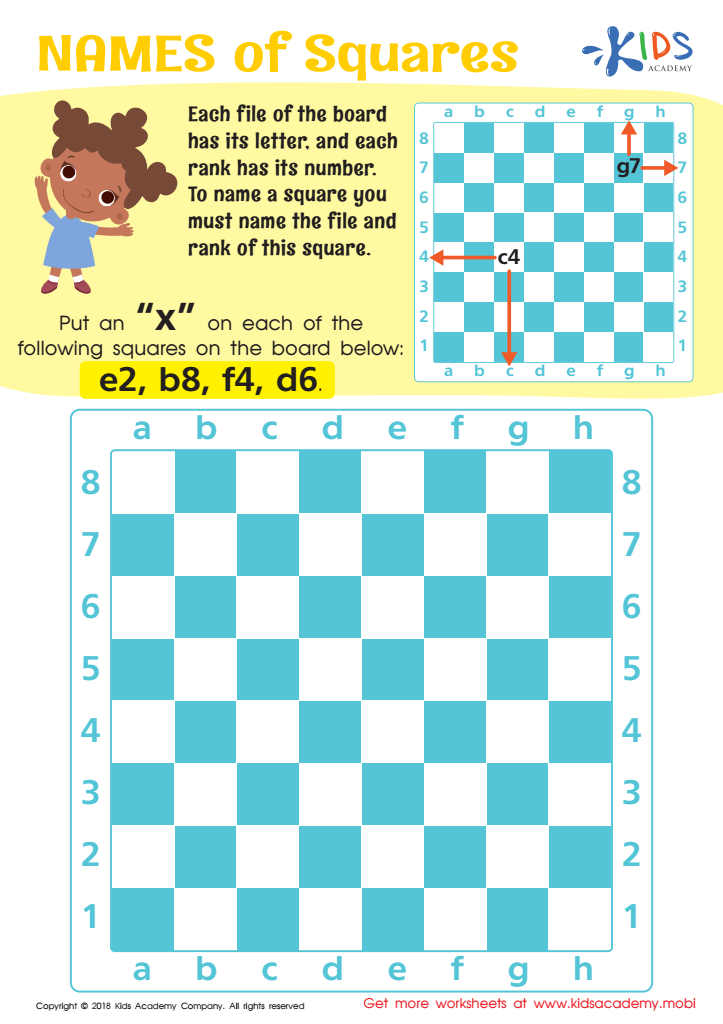

Names of Squares Worksheet
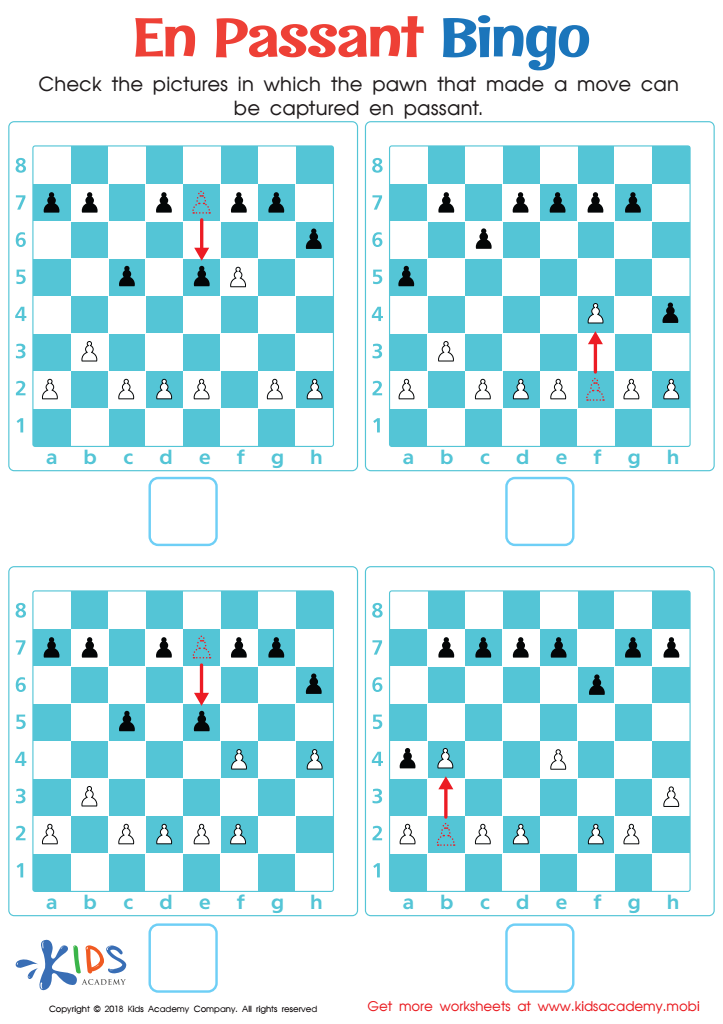

En Passant Bingo Worksheet
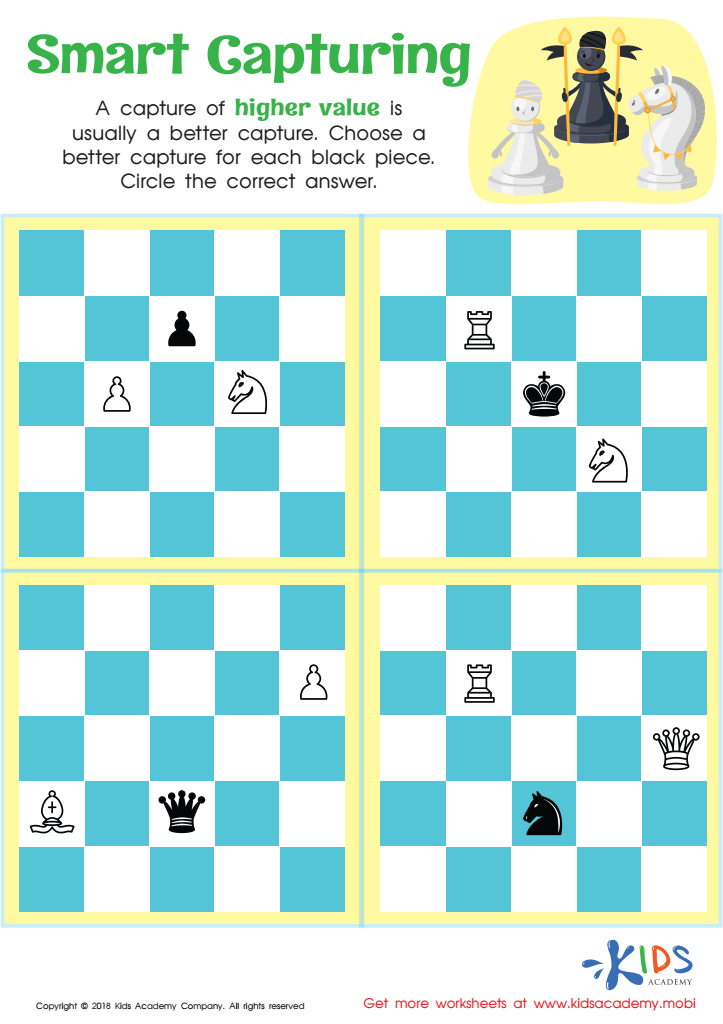

Smart Capturing Worksheet
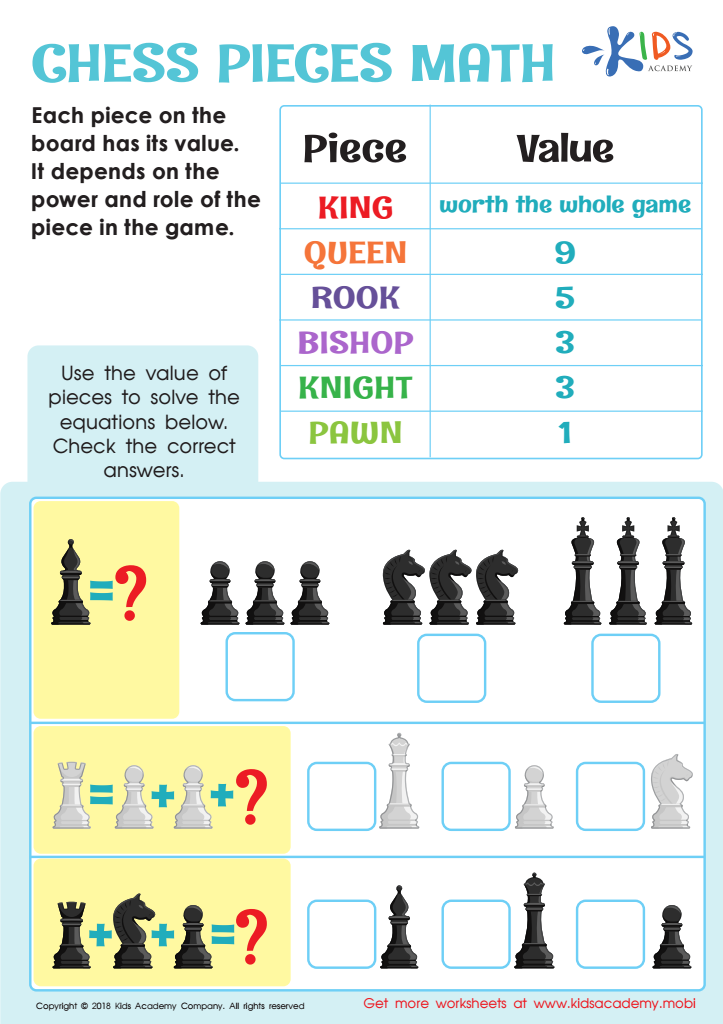

Chess Pieces Math Worksheet
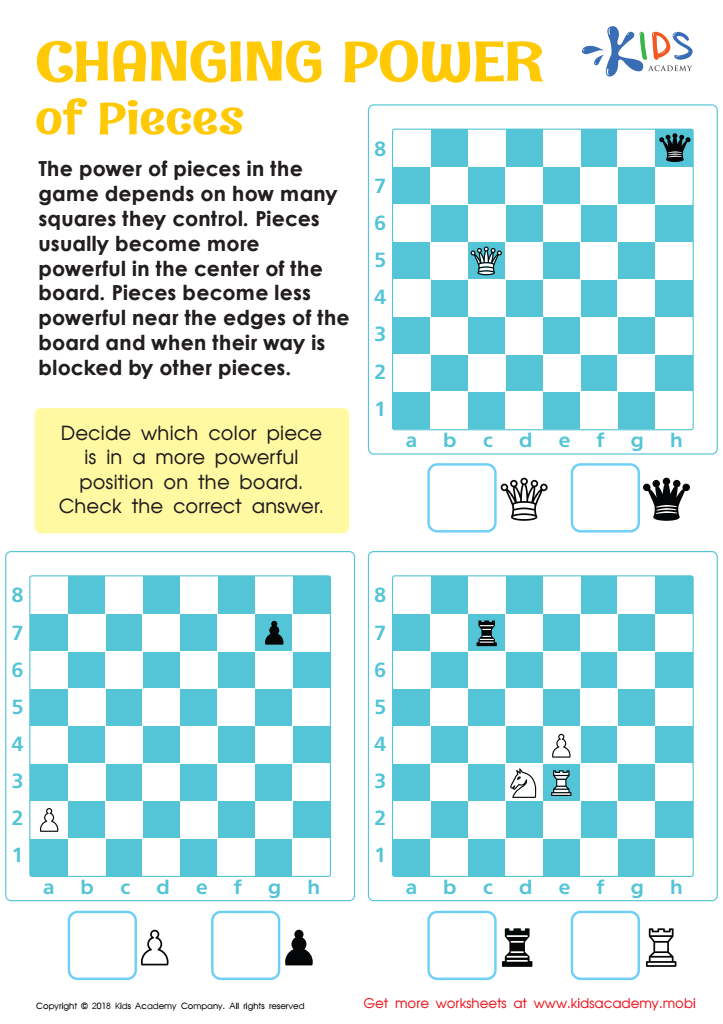

Changing Power of Chess Pieces Worksheet
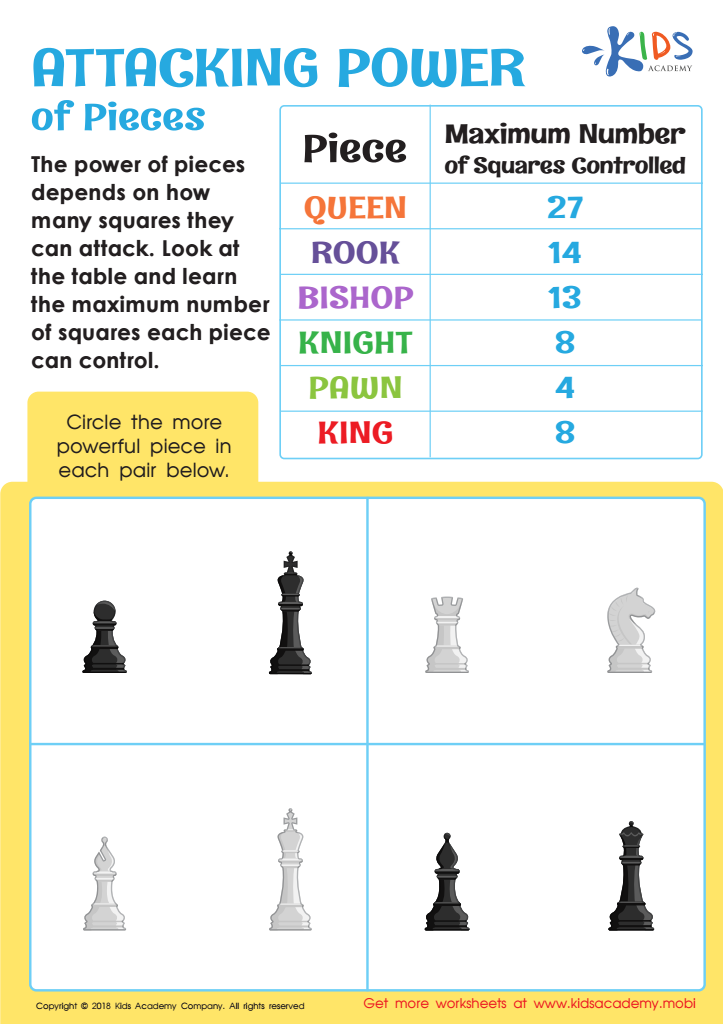

Attacking Power of Chess Pieces Worksheet
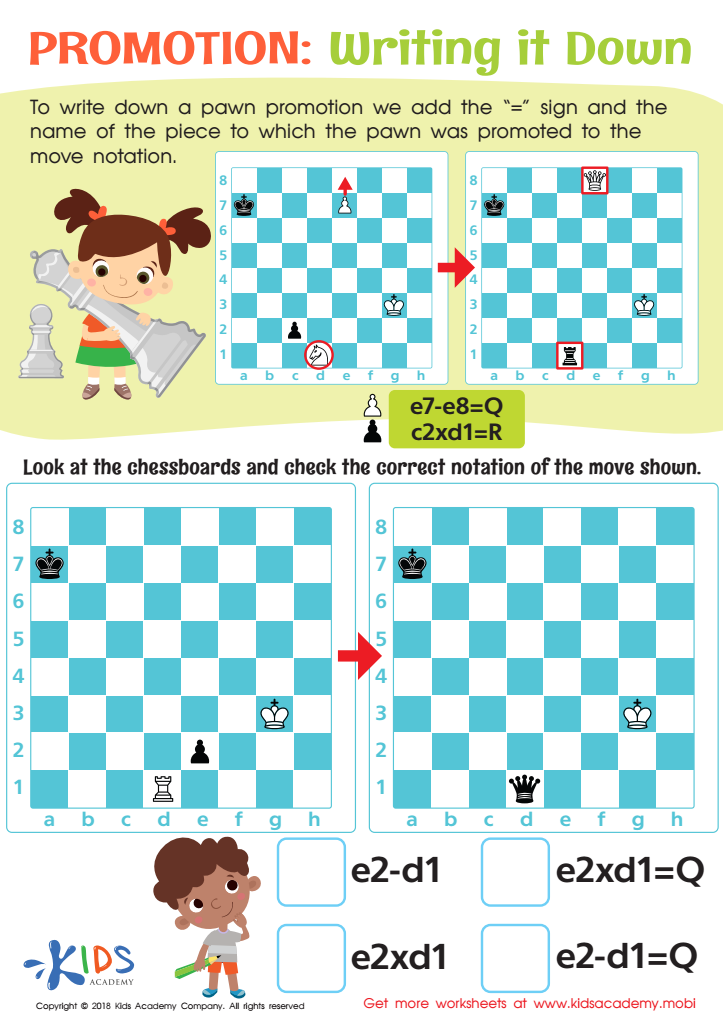

Writing it Down Worksheet
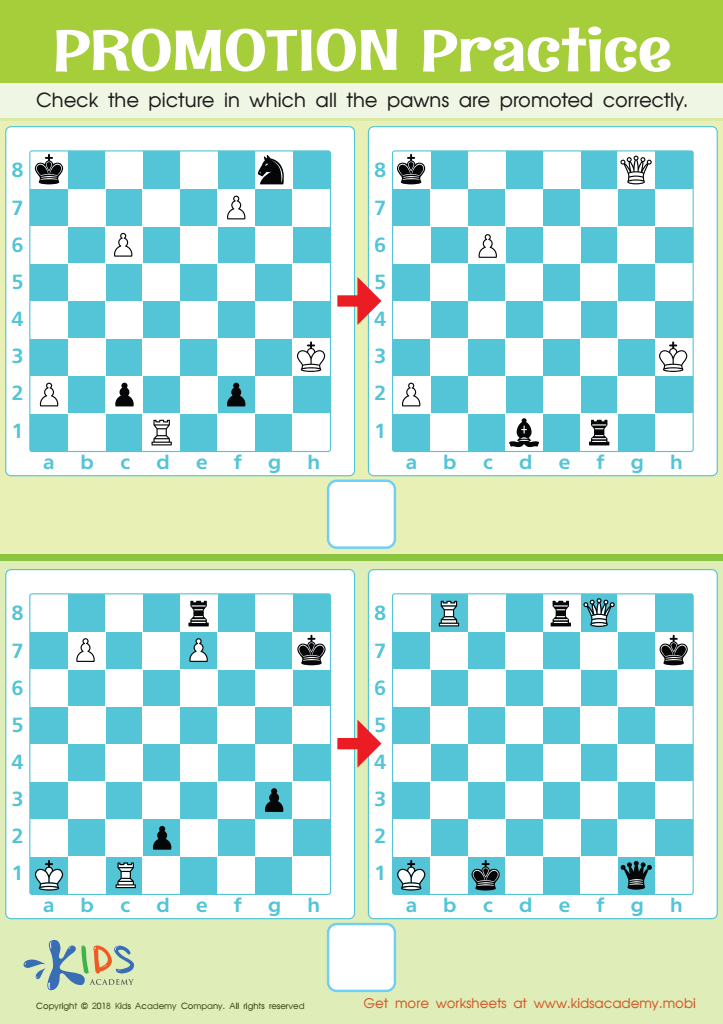

Promotion Practice Worksheet
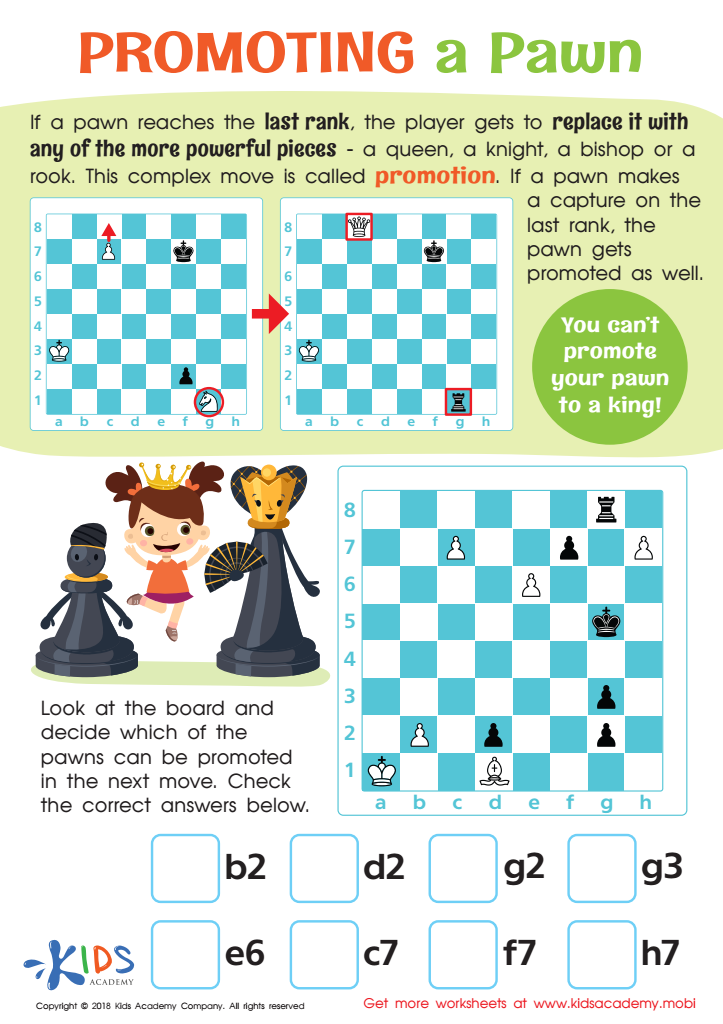

Promoting a Pawn Worksheet
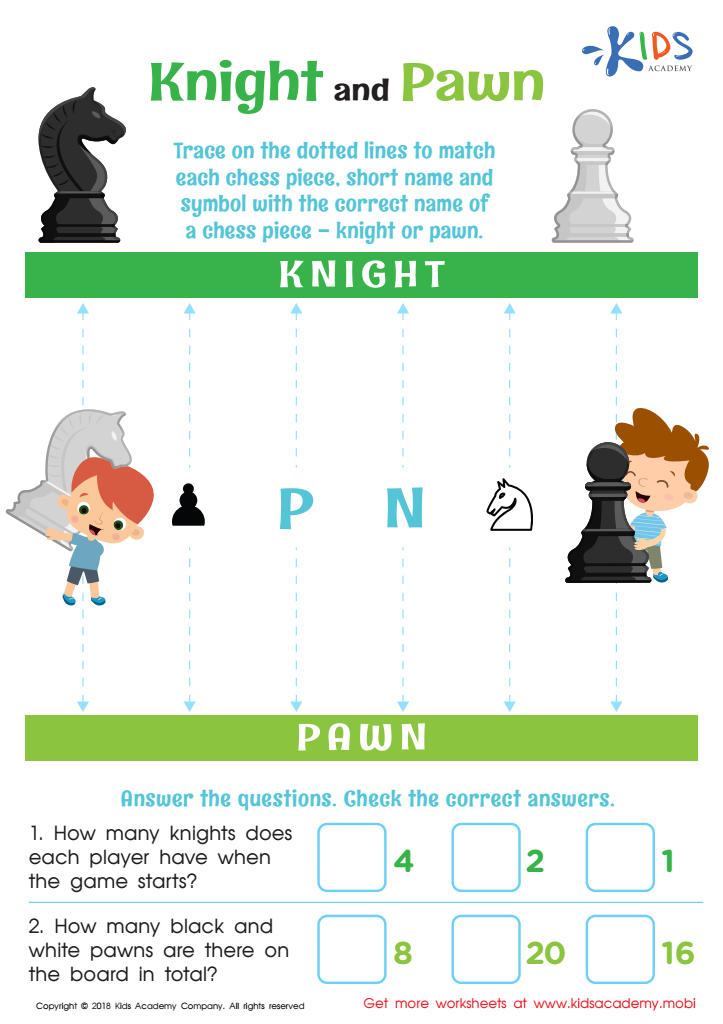

Knight and Pawn Worksheet
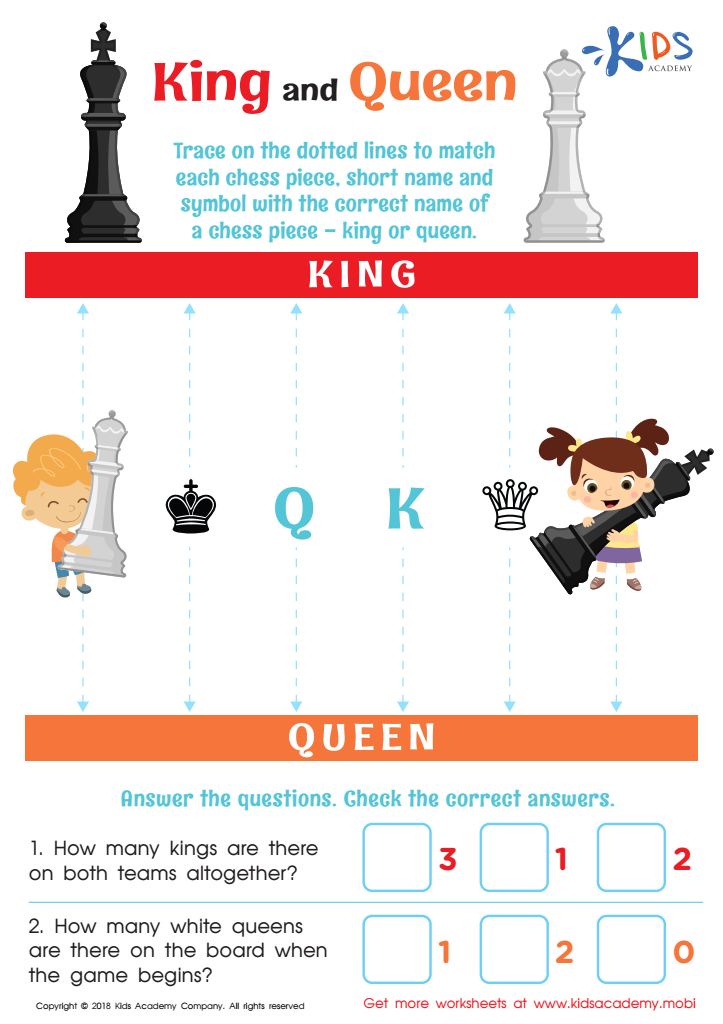

King and Queen Worksheet
Normal Chess worksheets tailored for 6-year-olds present an exceptional tool in fostering young minds to embrace the intricate world of chess effectively. These specially designed worksheets are not just another set of exercises; they are a gateway for children to understand and love the game of chess at a tender age. By focusing on the basics of Normal Chess, these worksheets simplify complex concepts into bite-sized, digestible pieces of information that are age-appropriate and engaging for young learners.
The beauty of Normal Chess worksheets for 6-year-olds lies in their ability to blend learning with fun. Children are naturally curious and eager to explore; these worksheets cater to this innate curiosity by presenting chess in a playful yet educational manner. Through puzzles, simple strategies, and basic gameplay exercises, children learn the rules and tactics of chess, developing critical thinking and problem-solving skills along the way.
Moreover, these worksheets are designed to enhance cognitive development among young children. Chess requires concentration, planning, and foresight—skills that are crucial not only in chess but in real-life scenarios as well. By engaging with Normal Chess worksheets, 6-year-olds are not only setting the foundation for becoming proficient chess players but are also developing a robust mental framework that supports academic and personal growth.
In conclusion, Normal Chess worksheets for 6-year-olds are an invaluable resource. They make learning chess accessible and enjoyable, ensuring that the journey into the world of chess is as rewarding as it is educational.
 Assign to My Students
Assign to My Students


